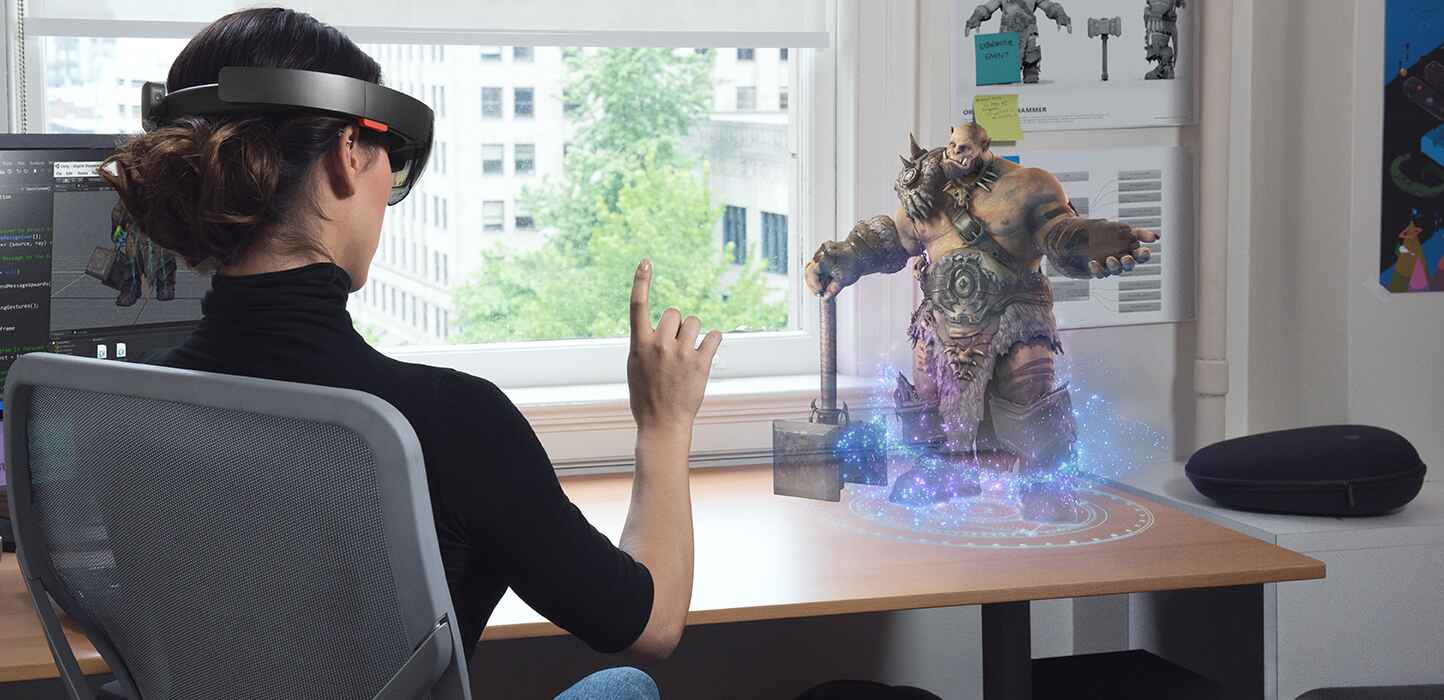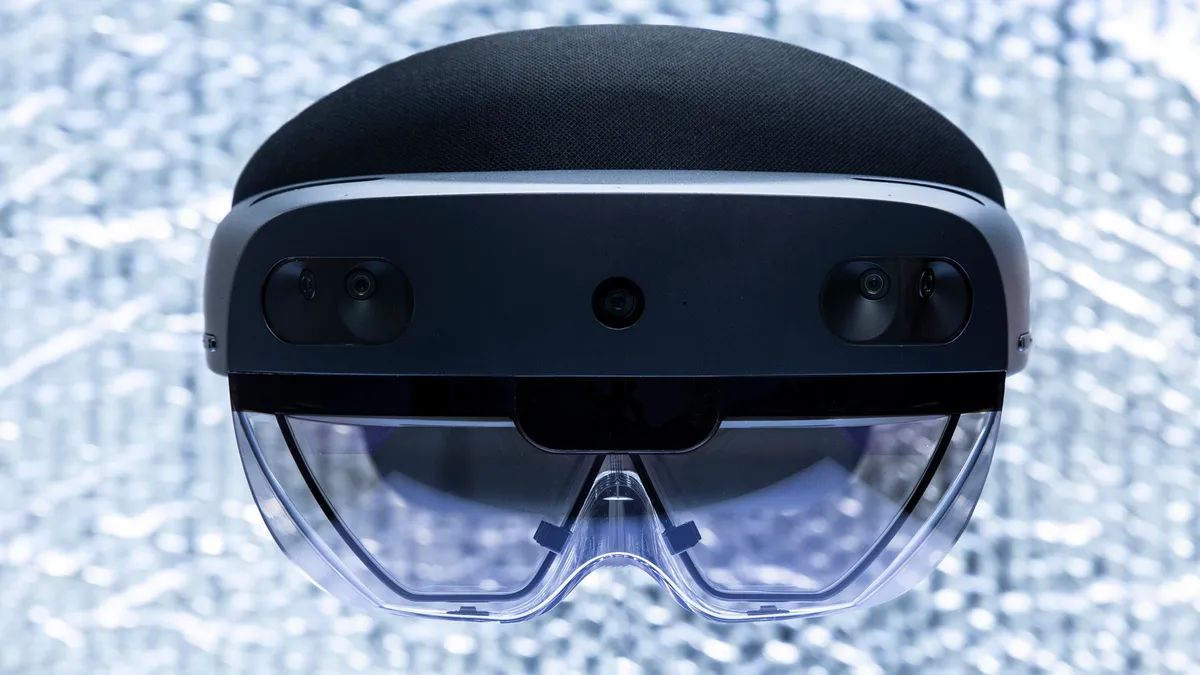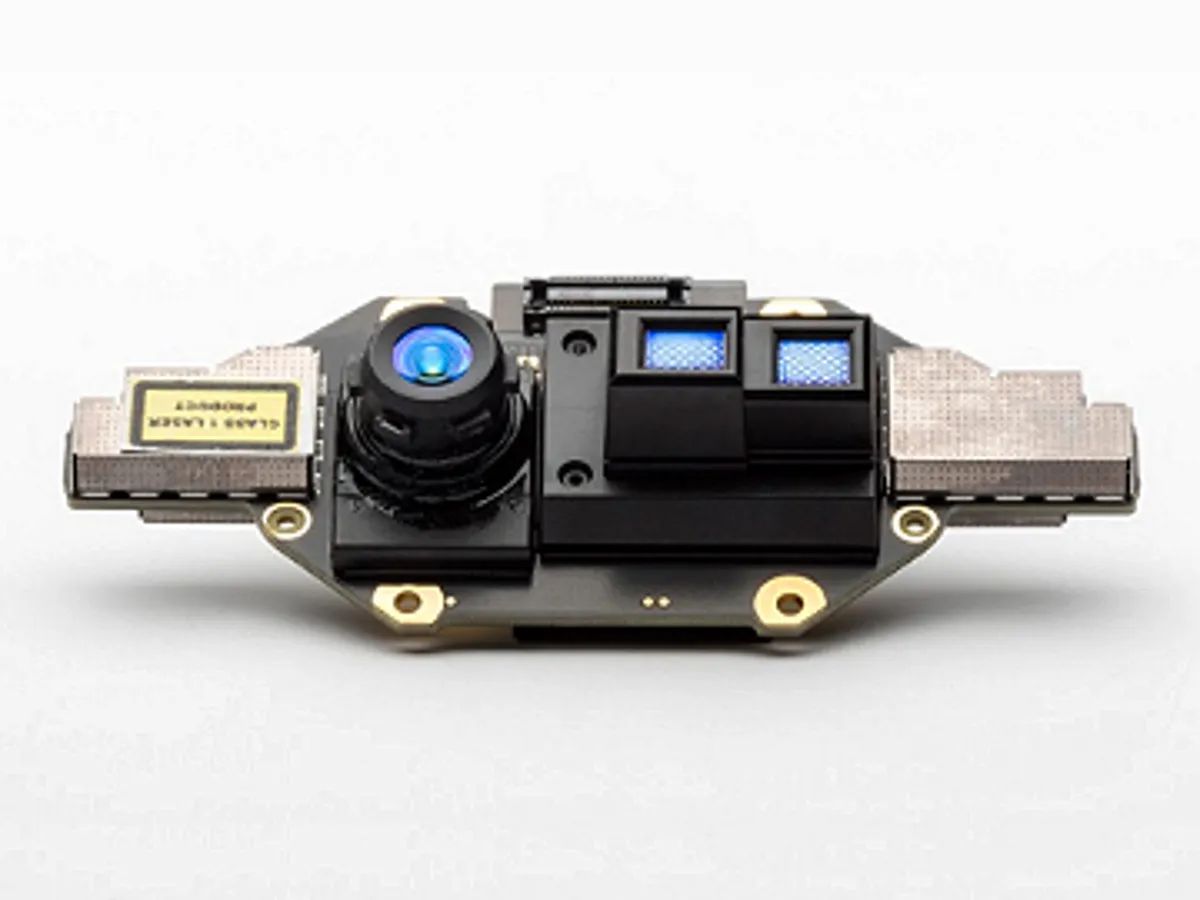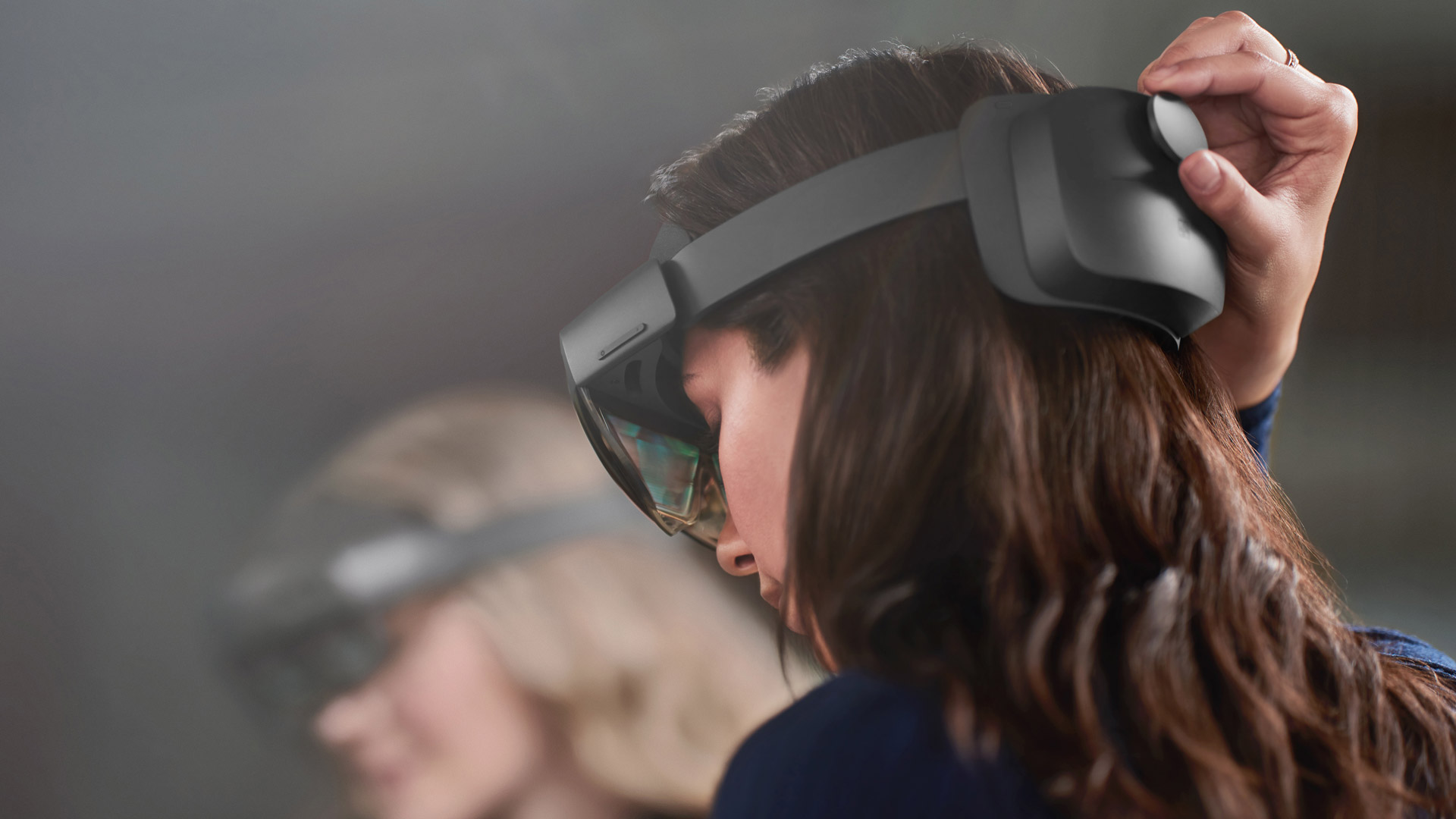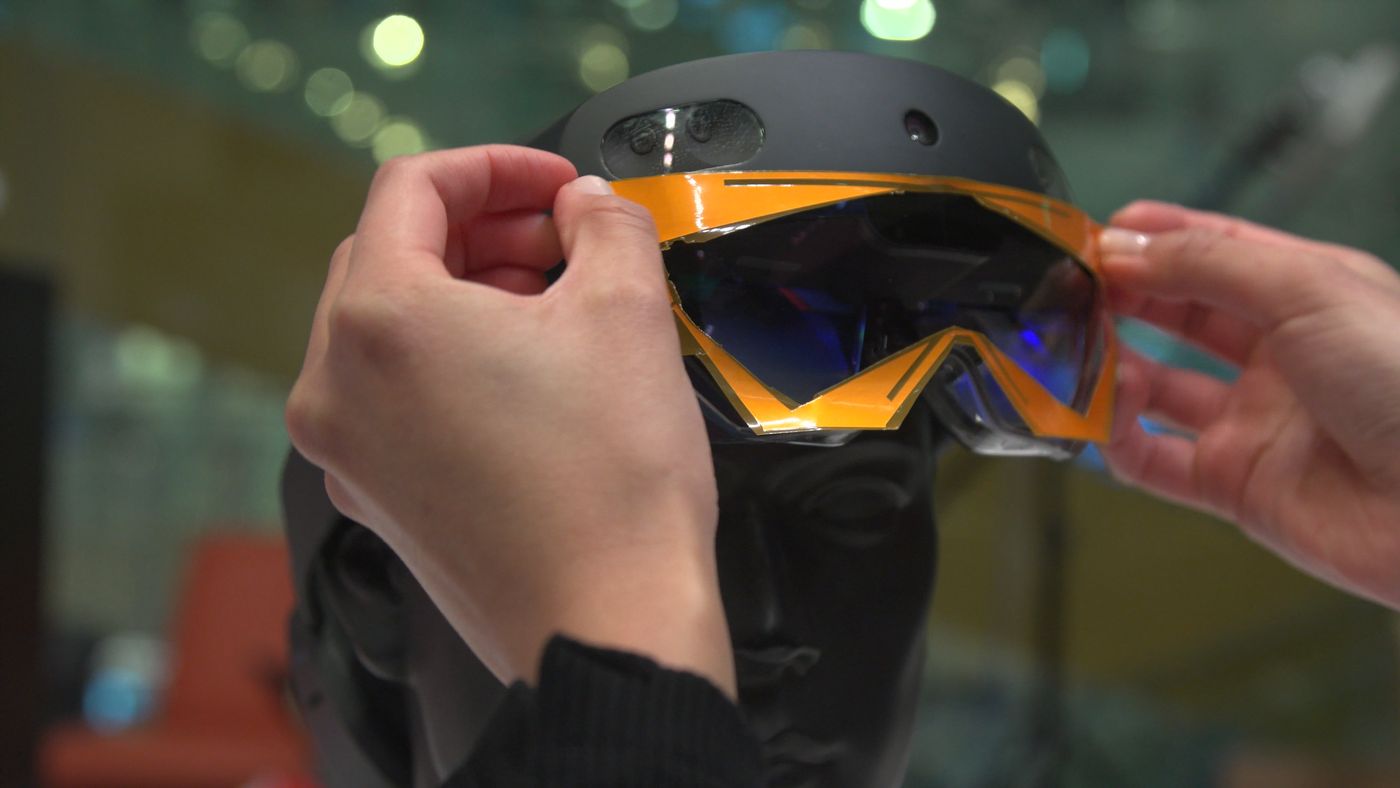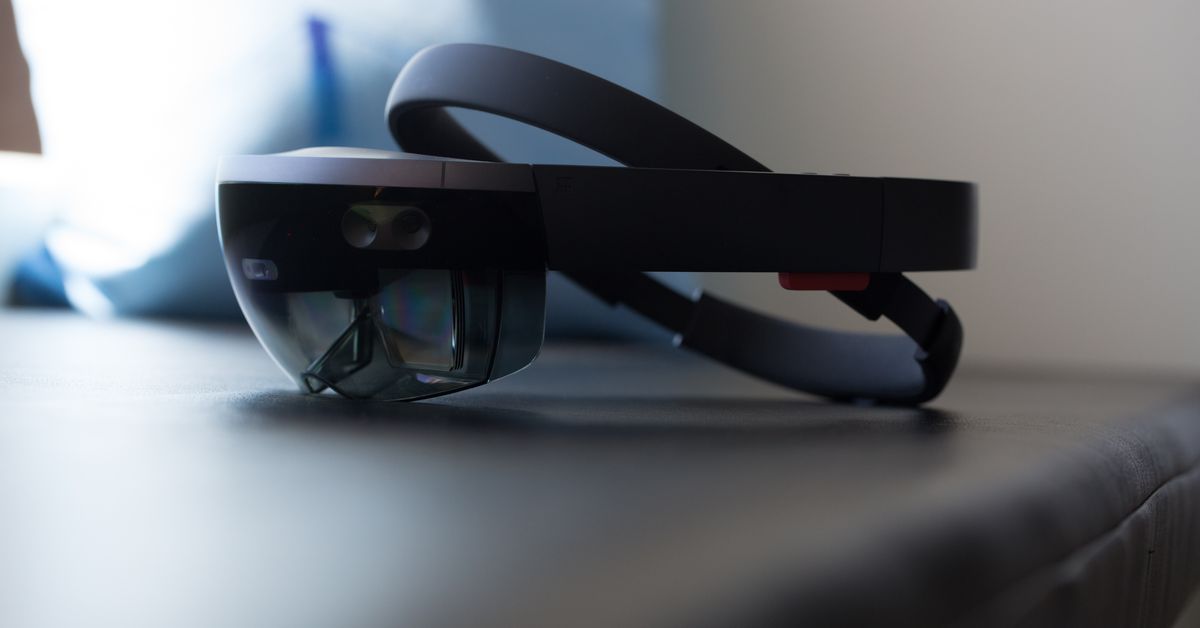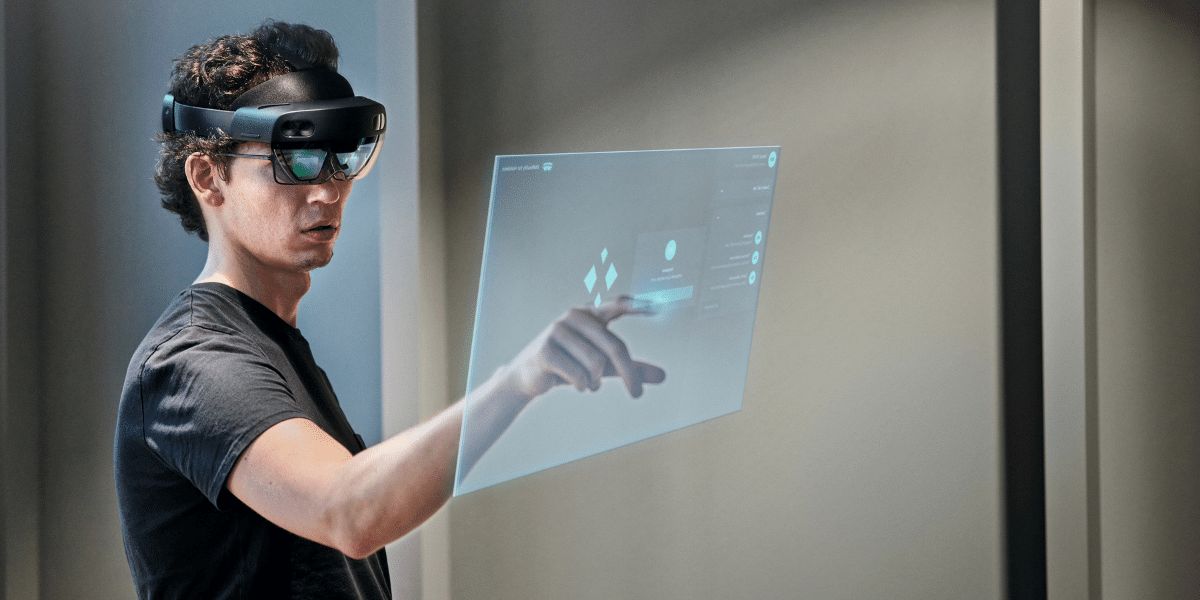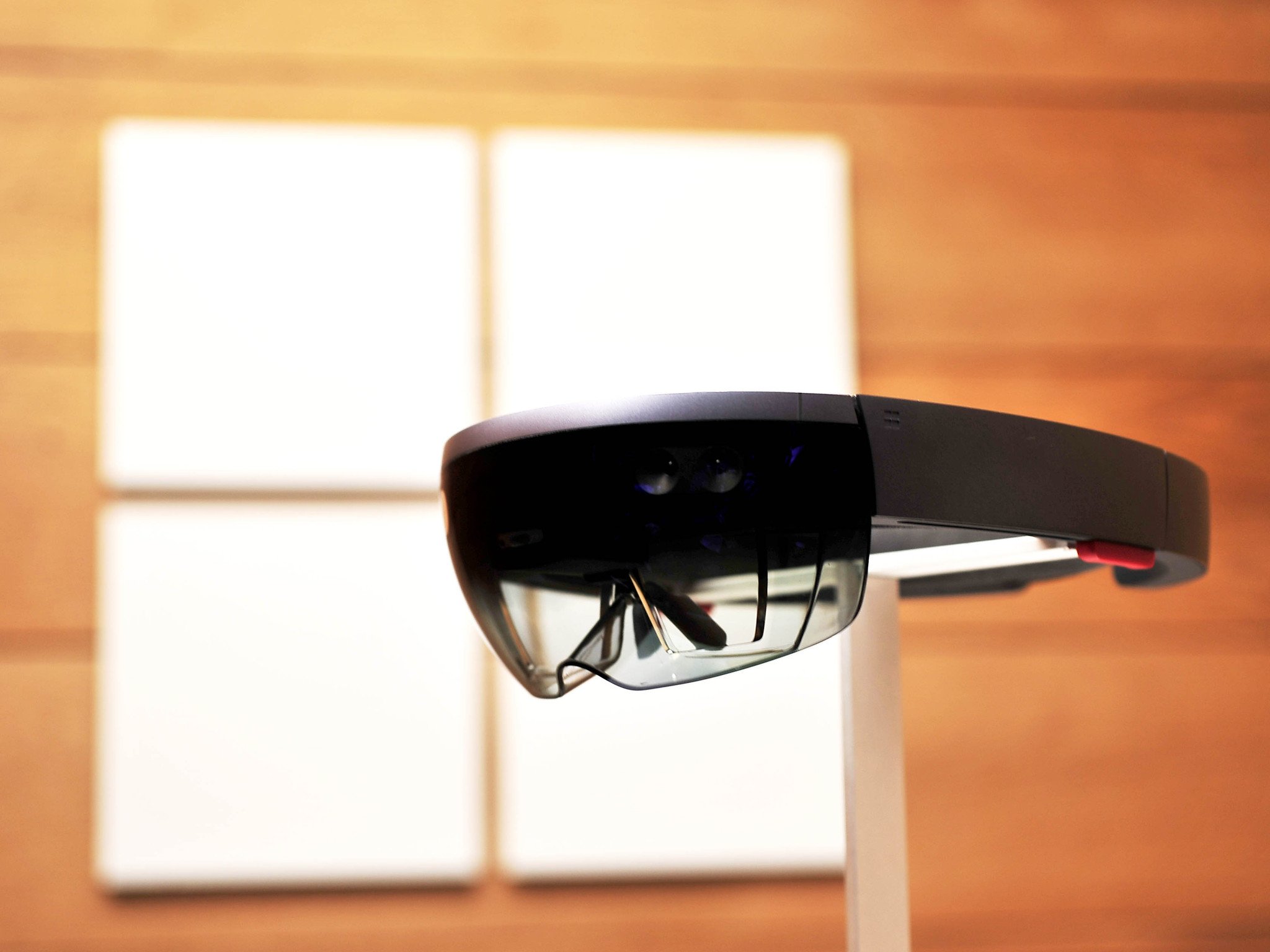Introduction
HoloLens, developed by Microsoft, is a groundbreaking mixed reality device that offers users a unique and immersive experience. One of the key features that make HoloLens stand out is its advanced tracking system, which allows users to interact with virtual objects seamlessly. This article will delve into the fascinating world of HoloLens tracking and explore how it works.
The tracking system of HoloLens is primarily based on a technique known as inside-out tracking, which means that the device uses a combination of sensors and cameras to determine the user’s position and movements in real-time. By understanding how HoloLens achieves this, we can gain a deeper appreciation for the device’s capabilities.
At its core, inside-out tracking relies on several key components, including depth sensing, spatial mapping, feature tracking, head tracking, eye tracking, and gesture tracking. These elements work together seamlessly to create a compelling mixed reality experience for the user.
Depth sensing is a critical aspect of HoloLens tracking, as it allows the device to perceive the depth and distance of objects in the real world. This is achieved through the use of depth-sensing cameras and infrared lasers. By accurately measuring the distance between the user and the surrounding environment, HoloLens can precisely place virtual objects within the user’s field of view.
Spatial mapping is another essential component of the tracking system. HoloLens uses a combination of cameras and sensors to create a detailed 3D map of the user’s physical environment. This mapping allows the device to understand the layout of the room, identify surfaces such as walls and floors, and anchor virtual objects in the real world.
Feature tracking is crucial for HoloLens to accurately track the user’s movements. It involves the detection and tracking of key features in the environment, such as corners and edges. The device uses computer vision algorithms to match these features across frames, enabling precise monitoring of the user’s position and orientation.
Inside-out tracking
Inside-out tracking is the primary tracking technology used by HoloLens. Unlike traditional tracking systems that require external sensors or markers, inside-out tracking is performed entirely by the device. This approach offers users more freedom of movement and eliminates the need for complicated setups.
Inside-out tracking uses a combination of sensors, cameras, and advanced algorithms to track the position and movements of the user in real-time. The key principle behind this technology is that the device observes the surrounding environment, analyzes the visual information captured by its cameras, and uses that data to determine its own position relative to the user and the physical space.
To achieve inside-out tracking, HoloLens relies on depth sensing, spatial mapping, and feature tracking. The depth-sensing cameras and infrared lasers on the device enable accurate depth perception. This allows HoloLens to understand the distance between the user and various objects in the environment, enabling the precise placement of virtual objects.
Spatial mapping is another important aspect of inside-out tracking. By continuously scanning the environment, HoloLens creates a detailed and dynamic 3D map of the physical space. This mapping includes identifying surfaces, such as walls and floors, and understanding the layout and structure of the room. It enables HoloLens to anchor virtual content in a way that aligns seamlessly with the real world.
Feature tracking is a key component of inside-out tracking that helps determine the device’s position and orientation. HoloLens uses computer vision algorithms to identify and track visual features in the environment, such as edges and corners. By continuously comparing and matching these features across frames, the device can accurately monitor its own movement and adjust the user’s virtual experience accordingly.
Overall, inside-out tracking is a revolutionary technology that allows HoloLens to provide an immersive mixed reality experience. By leveraging depth sensing, spatial mapping, and feature tracking, the device can precisely track the user’s movements and ensure that virtual content seamlessly blends with the real world. This level of tracking accuracy and freedom of movement opens up endless possibilities for gaming, education, design, and many other fields.
Depth Sensing
Depth sensing is a crucial aspect of HoloLens tracking that enables the device to understand the distance and depth of objects in the real world. This information is vital for placing virtual objects accurately and seamlessly within the user’s field of view.
HoloLens utilizes advanced depth-sensing technology, including depth-sensing cameras and infrared lasers, to capture detailed depth information of the environment. These depth-sensing cameras work in tandem with the device’s regular RGB cameras, providing a comprehensive understanding of the physical space.
The depth-sensing cameras capture depth data by emitting infrared light and measuring the time it takes for the light to bounce back. By analyzing the patterns and distortions in the reflected light, HoloLens can calculate the distance between the device and various objects in its surroundings.
This depth information is then used to create a depth map, which is a representation of the distance of objects from the device. The depth map is continuously updated in real-time, allowing HoloLens to track the user’s movements and accurately position virtual objects within the environment.
By understanding the depth of the environment, HoloLens can apply occlusion, where virtual objects are visually blocked by real-world objects. For example, if a virtual object is placed behind a table, HoloLens will adjust the rendering to ensure that the table appears in front of the virtual object when viewed from the correct angle.
Depth sensing not only enables accurate positioning of virtual objects but also enhances the interaction between the user and the mixed reality environment. With depth information, HoloLens can detect gestures, hand movements, and proximity, allowing users to interact with virtual objects in a natural and intuitive way.
In summary, depth sensing plays a vital role in HoloLens tracking by providing accurate depth information of the environment. With depth-sensing cameras and infrared lasers, HoloLens can create a depth map in real-time, allowing for precise placement of virtual objects and enhancing the immersive mixed reality experience for users.
Spatial Mapping
Spatial mapping is a crucial component of HoloLens tracking that enables the device to understand and map the physical environment in which the user is operating. This technology creates a detailed 3D representation of the real world, allowing virtual content to seamlessly blend with the user’s surroundings.
To achieve spatial mapping, HoloLens leverages a combination of cameras and sensors. These devices continuously capture and analyze the visual data of the user’s environment to create an accurate and dynamic 3D map.
The spatial mapping process begins with the cameras capturing the surrounding environment. The images are then processed using advanced computer vision algorithms that identify and analyze the different surfaces, objects, and structures present in the scene.
With this information, HoloLens creates a 3D point cloud, which is a detailed representation of the environment’s geometry. This point cloud includes information about the position, size, and shape of objects, as well as the layout of the room, including walls, floors, and ceilings.
The point cloud is continuously updated and refined as the user moves around the space. This ensures that HoloLens maintains an accurate and up-to-date understanding of the surrounding environment, allowing virtual objects to be anchored seamlessly in the real world.
Spatial mapping enables occlusion, which is a fundamental aspect of creating an immersive mixed reality experience. Occlusion ensures that virtual objects appear behind real-world objects, giving the illusion that they exist in the same physical space. For example, a virtual chair placed in front of a real table will be visually blocked by the table when viewed from the correct angle.
Additionally, spatial mapping allows HoloLens to create boundaries and boundaries for the user. Boundaries are used to establish a safe and comfortable working area, preventing the user from walking into walls or obstacles. These boundaries can be defined by the user or automatically generated based on the physical space.
In summary, spatial mapping is a critical aspect of HoloLens tracking that enables the device to understand and map the user’s physical environment. By creating a detailed 3D representation of the space, HoloLens can seamlessly integrate virtual content into the real world, providing users with a truly immersive mixed reality experience.
Feature Tracking
Feature tracking is an integral part of HoloLens tracking, as it allows the device to accurately monitor and track the user’s position and movements in real-time. By detecting and tracking key visual features in the environment, HoloLens ensures precise alignment of virtual objects with the real world.
To achieve feature tracking, HoloLens utilizes advanced computer vision algorithms that analyze and compare visual data from the device’s cameras. These algorithms identify distinctive features in the environment, such as corners, edges, and patterns, which can be tracked across frames.
The feature tracking process begins with the initial detection of these visual features in the captured images. Once the features are detected, HoloLens assigns unique identifiers to each feature, allowing them to be tracked as the camera moves and new frames are captured.
By continuously comparing and matching the identified features across frames, HoloLens can accurately monitor the device’s movement, as well as the user’s relative position and orientation. This information is crucial for ensuring that virtual content is anchored precisely in the real world.
Feature tracking also enables HoloLens to accurately detect and track the user’s gestures. By analyzing the movement and positioning of the user’s hands or fingers, HoloLens can interpret the gestures and translate them into interactive commands.
In addition to tracking user movements, feature tracking allows HoloLens to understand the spatial relationship between the user and virtual objects. By continuously tracking the visual features of both the user and the virtual content, HoloLens can ensure that virtual objects appear correctly relative to the user’s position and perspective.
Moreover, feature tracking plays a crucial role in maintaining the continuity and stability of the mixed reality experience. By tracking visual features, HoloLens can effectively handle situations where objects or the environment temporarily obstruct the view. The device can quickly recover and maintain tracking as soon as the obstructing object is out of the view.
Overall, feature tracking is a vital component of HoloLens tracking that ensures precise alignment and interaction between the user and virtual objects. By detecting and tracking key visual features in the environment, HoloLens creates a seamless mixed reality experience, enabling users to explore and interact with virtual content in a natural and intuitive manner.
Head Tracking
Head tracking is a fundamental aspect of HoloLens tracking that allows the device to understand and respond to the user’s head movements. By accurately tracking the position and orientation of the user’s head, HoloLens creates a realistic and immersive mixed reality experience.
HoloLens utilizes a combination of sensors, including an inertial measurement unit (IMU) and a gyroscope, to monitor the user’s head movements in real-time. The IMU measures the rate of angular rotation of the head, while the gyroscope provides information about the orientation of the head relative to the device.
With these sensors, HoloLens can precisely track the three-dimensional movement of the user’s head. This includes tracking rotational movements, such as turning left or right, as well as tilting and nodding motions.
Head tracking is essential for maintaining a consistent and accurate perspective in the mixed reality experience. As the user moves their head, HoloLens adjusts the virtual content to align with the user’s changing viewpoint. This creates a sense of depth and immersion, as virtual objects appear to be stationary relative to the user’s head position.
Furthermore, head tracking enables the user to interact with virtual content in a natural and intuitive way. By simply turning their head or changing their gaze, users can explore the virtual environment and focus on different objects or elements within the scene.
HoloLens also incorporates a technology called simultaneous localization and mapping (SLAM) to enhance head tracking. SLAM combines the tracking data from the user’s head movements with the spatial mapping information to create a more accurate and robust tracking system.
For example, as the user moves within a physical space, HoloLens uses SLAM to simultaneously track the user’s head movements and update the spatial map. This allows virtual objects to remain anchored in the appropriate position within the environment, even as the user changes their physical location.
In summary, head tracking is a vital component of HoloLens tracking that allows the device to accurately monitor the position and orientation of the user’s head. By incorporating sensors and advanced algorithms, HoloLens creates a realistic and immersive mixed reality experience, where virtual content aligns seamlessly with the user’s perspective and head movements.
Eye Tracking
Eye tracking is a cutting-edge technology integrated into HoloLens that allows the device to accurately monitor and interpret the user’s eye movements. By tracking where the user is looking, HoloLens can provide a more immersive and natural interaction with the virtual content.
HoloLens utilizes infrared cameras and sensors to capture and analyze the user’s eye movements. These cameras emit infrared light and measure the reflections from the user’s eyes, enabling the device to precisely track the position and movement of the eyes.
Eye tracking opens up a range of possibilities in terms of user interaction and control. One of the main benefits of eye tracking is gaze-based input. HoloLens can determine the point of gaze, allowing the user to interact with virtual objects simply by looking at them. This gaze-based input enhances the user experience, making it more intuitive and seamless.
Moreover, eye tracking enables adaptive foveated rendering. This technique allocates the device’s computational resources based on where the user is looking. By rendering the highest level of detail in the user’s immediate field of view and reducing detail in the peripheral vision, HoloLens can optimize performance and enhance visual quality, resulting in a more realistic and immersive experience.
Eye tracking also plays a role in the area of social interactions within the mixed reality environment. By tracking eye movements and gaze patterns, HoloLens can enhance virtual avatars to respond to and make eye contact with the user, creating a more realistic and engaging interaction.
Furthermore, eye tracking provides valuable analytics and insights into user behavior. By studying eye movement data, developers and researchers can gain a better understanding of user attention and behavior within the mixed reality environment. This information can be used to improve user interfaces, content design, and overall user experience.
It is important to note that eye tracking on HoloLens is not limited to pupil detection and gaze tracking. The device also incorporates sophisticated algorithms to interpret eye movement patterns, enabling functions such as eye-controlled scrolling and eye-based selection.
In summary, eye tracking technology in HoloLens allows for accurate monitoring and interpretation of the user’s eye movements. Whether it is for gaze-based input, adaptive foveated rendering, enhancing social interactions, or gaining insights into user behavior, eye tracking greatly enhances the immersion, interactivity, and overall user experience in the mixed reality environment.
Gesture Tracking
Gesture tracking is a key component of HoloLens tracking that enables users to interact with virtual content using natural hand movements and gestures. By tracking and interpreting hand gestures, HoloLens provides an intuitive and immersive mixed reality experience.
HoloLens employs a combination of sensors, including depth-sensing cameras and infrared cameras, to capture and analyze hand gestures. These sensors detect and track the movements of the user’s hands, allowing the device to interpret the gestures and translate them into interactive commands.
The gesture tracking technology on HoloLens recognizes a variety of hand gestures, such as pinch, grab, swipe, and tap. These gestures can be used to manipulate virtual objects, navigate menus and interfaces, and perform actions within the mixed reality environment.
By understanding hand gestures, HoloLens enhances the user experience by providing a more intuitive and natural means of interaction. Users can interact with virtual objects as if they were physical entities, grabbing and moving them with their hands, or using gestures to perform actions like rotating or resizing objects.
Gesture tracking also enables hand-based gestures that go beyond simple point-and-click interactions. For example, users can make a grabbing motion to pick up and move virtual objects, or use a pinch gesture to scale and resize them. These gestures provide a higher level of interactivity, making the mixed reality experience feel more realistic and immersive.
In addition to hand gestures, HoloLens also incorporates voice commands and gaze-based input for a comprehensive interaction system. The combination of these input methods allows users to choose the most convenient and effective way to interact with virtual content, depending on the context and their preferences.
To enhance the accuracy and efficiency of gesture tracking, HoloLens employs sophisticated algorithms that analyze and interpret the detected hand movements. These algorithms take into account factors such as hand pose, movement speed, and trajectory, ensuring reliable and responsive tracking of the user’s gestures.
Furthermore, developers have the flexibility to create customized gesture recognition and mapping for their applications. This enables them to design unique and tailored experiences that best suit their specific use cases and user interactions.
In summary, gesture tracking is a crucial aspect of HoloLens tracking that enables users to interact with virtual content using natural hand movements and gestures. By recognizing and interpreting hand gestures, HoloLens provides an intuitive and immersive mixed reality experience, allowing users to manipulate and control virtual objects in a way that feels natural and seamless.
Conclusion
In conclusion, HoloLens tracking is a remarkable technology that plays a critical role in creating a truly immersive and interactive mixed reality experience. Through a combination of inside-out tracking, depth sensing, spatial mapping, feature tracking, head tracking, eye tracking, and gesture tracking, HoloLens is able to accurately monitor the user’s position, movements, and interactions within the virtual environment.
Inside-out tracking eliminates the need for external sensors or markers, giving users the freedom to explore and interact with the virtual world without any additional setup. Depth sensing allows for precise placement of virtual objects in relation to the real world, while spatial mapping creates a detailed and dynamic 3D map of the physical environment, providing a seamless blend of virtual and real-world elements.
Feature tracking ensures accurate monitoring of the user’s position and movements, while head tracking tracks the user’s head movements, allowing the virtual content to align with the user’s perspective. Eye tracking provides a more natural and intuitive means of interaction, allowing users to control and navigate the mixed reality environment with their gaze, and gesture tracking enables users to interact with virtual objects through natural hand gestures.
Together, these tracking technologies in HoloLens create a cohesive and immersive mixed reality experience. Users can seamlessly interact with virtual content, explore their surroundings, and perform actions using gestures and eye movements. This opens up a whole new world of possibilities for various industries, including gaming, education, design, and more.
The continual advancements and integration of these tracking technologies in HoloLens pave the way for even more exciting developments in the field of mixed reality. As these technologies continue to evolve, we can expect even more seamless and immersive experiences, allowing users to experience the digital world in ways that were once only possible in our imagination.








